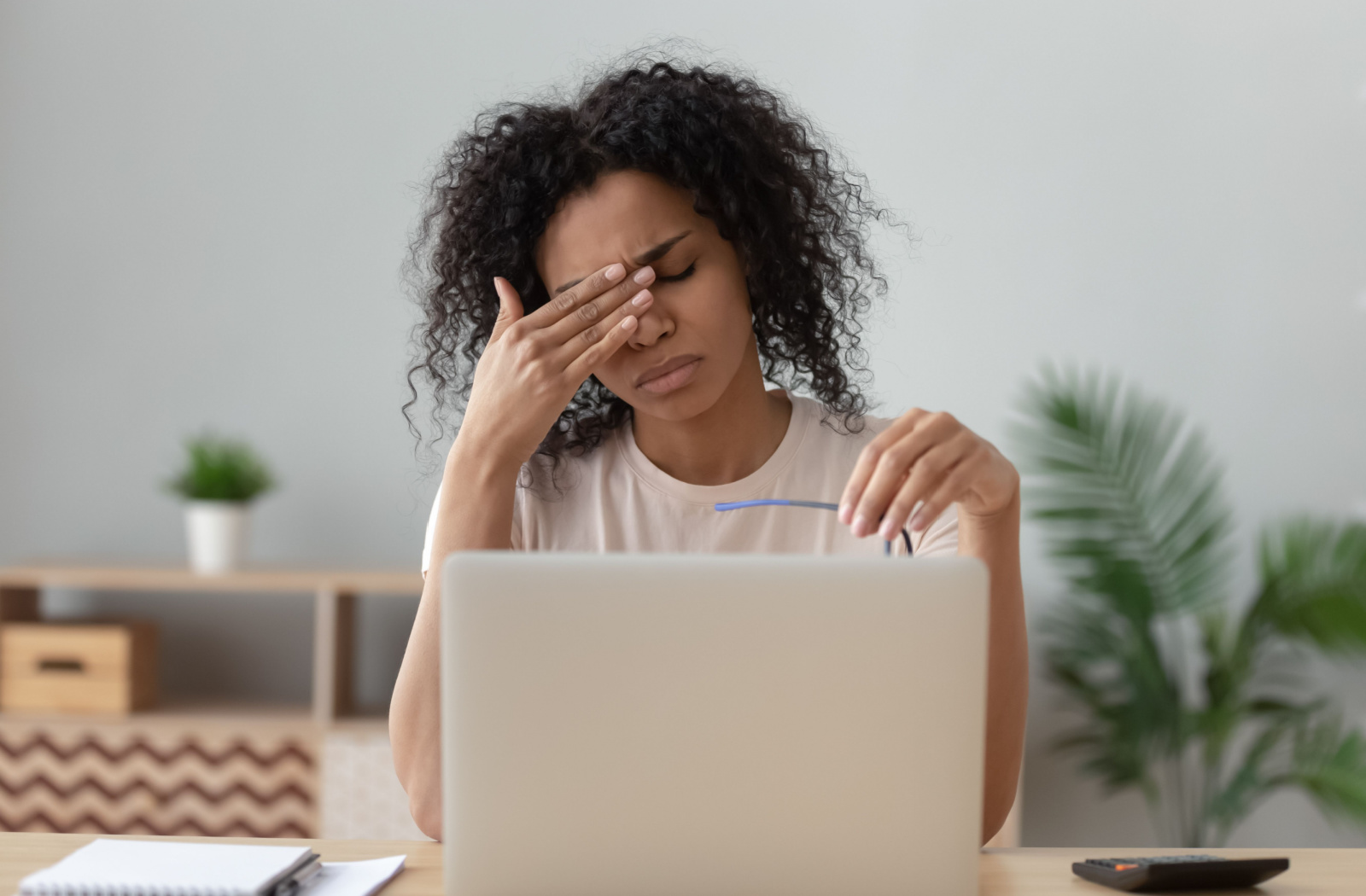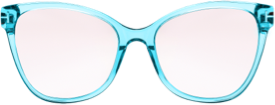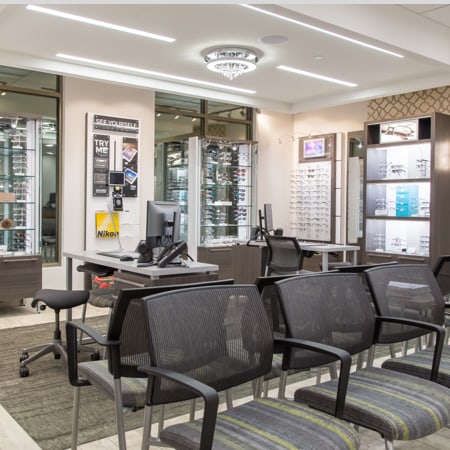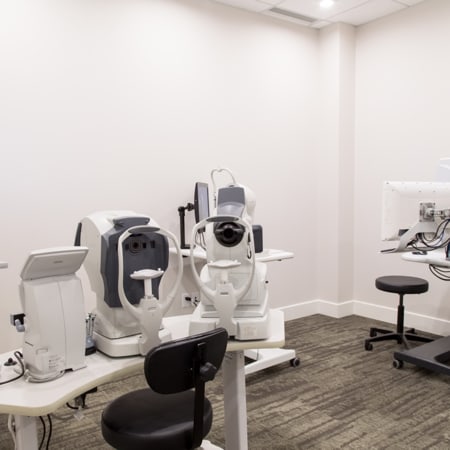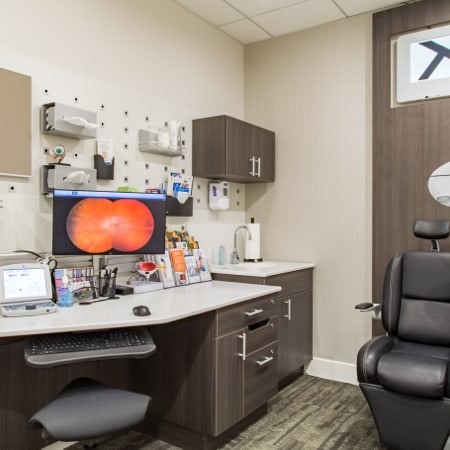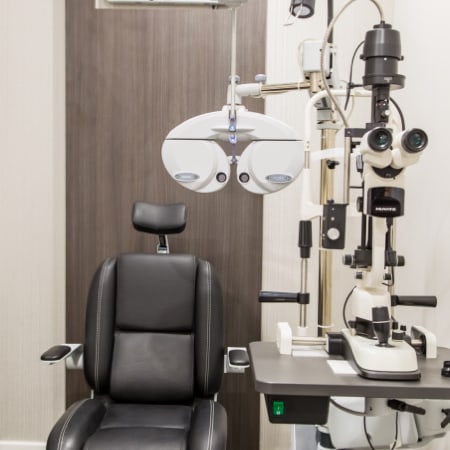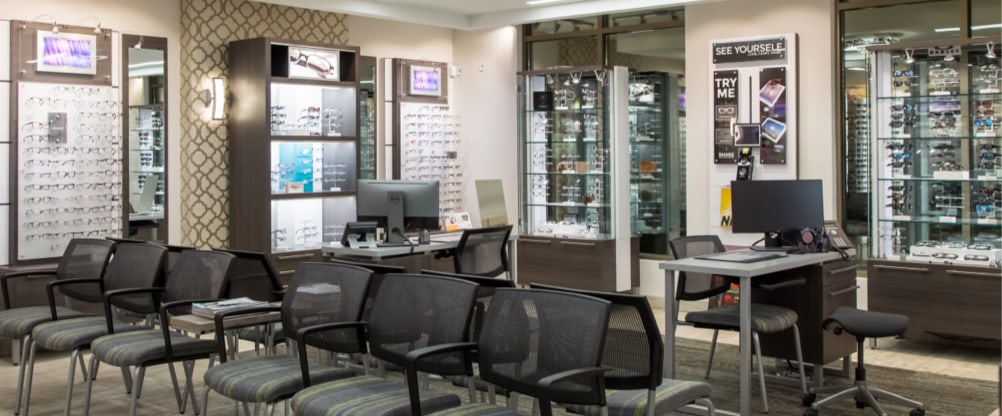If you’ve ever felt like there’s a burning, gritty, or dry sensation in your eye, you may be experiencing dry eye syndrome. This is a common condition that can lead to irritation and discomfort. But can it cause blurriness?
Dry eye syndrome affects your tears, which are needed for your eye to be protected, hydrated, and free from debris and contaminants. However, if this tear film becomes disrupted, it can lead to light scattering as it enters the eye. This can cause blurry vision and other vision problems, making it essential to speak with your optometrist and find relief from your dry eye.
What Causes Dry Eyes?
Your eyes are an extremely complex organ. When they’re functioning properly, they spread a thin film of tears over their surface every time you blink. This helps keep dust and dirt out and flushes away contaminants and bacteria that can harm the eye. The tears even keep the eye moisturized and hydrated to keep it working properly.
This film is made up of three microscopic layers:
- The mucus, or mucin, layer. This inner layer keeps the tear smooth and attaches to the eye.
- The water, or aqueous, layer. This is the central layer and makes up most of the tear. It keeps the eye protected, flushes away debris and contaminants, and keeps the eye properly hydrated.
- The oil, or lipid, layer. This is the outer layer of the tear. It keeps the water layer sealed, the surface of the tear smooth, and stops the tear from evaporating too soon. This is produced by the meibomian gland near the eyelids.
When a problem develops with the meibomian gland—the gland that produces the oil layer—the eye can’t produce enough oils for the outer layer of the tear film. This can lead to your tears evaporating too quickly and can cause the eye to begin to dry out. This is often caused by a medical condition called “blepharitis,” which causes inflammation near the meibomian gland.
Dry eyes can also be caused by too few tears being produced. Either way, the cause of the problem with tear production is most often due to:
- Sjogren’s syndrome
- Diabetes (which often causes diabetic retinopathy)
- Aging
- Certain medications (including antihistamines, antidepressants or steroid-based medicine)
- A recent surgery
- Trauma to the eye or surrounding area
- Excessive computer or electronic use
No matter the cause, when the tear film is unstable it leads to the development of a condition called “dry eye syndrome.”
The Symptoms of Dry Eye Syndrome

If you’ve ever felt a burning or sandy sensation on the surface of your eye, you may have experienced dry eye syndrome. Dry eye often feels like there’s sand trapped between your eyelid and eyeball or like there’s a permanent speck of dirt trapped on your eye.
Dry eye can also cause:
- Redness
- Swelling
- Irritation and general discomfort
- Light sensitivity
- Difficulty seeing in low-light conditions
In many situations, dry eye can even cause your eyes to begin over-producing tears, flooding the area and causing watery eyes. However, while this over-watering seems counterproductive to the name “dry eye,” this symptom is caused by the eye sending too many poor-quality tears to the dry surface. But since the poor-quality tears are evaporating before they can do their job, the over-flooding doesn’t help solve the problem.
Dry Eyes & Blurriness
But dry eye syndrome can also cause another problem: blurry vision.
Tear film is usually clear and smooth, and light refracts through the film and the cornea to reach the retina. When dry eye syndrome is left untreated, the tear film becomes unstable and no longer has a smooth surface. This can cause light rays to refract incorrectly into the eye and scatter before they reach the retina, leading to your brain receiving blurry information.
If you’ve ever driven in a car while it’s raining, think of your cornea (the outer surface of the eye) like the windshield. When the surface is clear and smooth with no obstructions, you can see clearly without an issue.
But when it’s raining and the windshield wipers haven’t smoothed this surface, the water on the windshield is extremely difficult to see through. This is similar to how your vision appears when your tears are evaporating too quickly.

And in some cases, chronic dry eye can even leave the cornea unprotected, causing minor damage and making it more difficult to see things clearly. This makes it essential to speak with an optometrist experienced in treating dry eye syndrome so you can help keep your vision clear.
How Is Dry Eye Treated?
Fortunately, since dry eye is so common, there are several treatment options available to find relief from your dry eyes. Here at Central Optometry in London, Ontario, we offer several approaches to treating this condition depending on the cause of your dry eyes. Our treatments include:
- IPL Therapy: This approach uses intense pulsating light to help the meibomian gland produce the oils needed for healthy tears.
- LipiFlow: This approach uses gentle heat and pressure to help open the oil glands and remove the blockage.
- Radiofrequency Treatment: This uses radio waves to stimulate the area to promote oil production and remove older oils that may be clogging the gland.
- ZEST (Zocular Eyelid System Treatment): If the optometrist determines that your condition is caused by blepharitis (the inflammation of the eyelid and meibomian gland), they may recommend ZEST to treat dry eyes. ZEST Is like a deep shampoo for the eyes to clean debris from the lids and lashes. This involves the use of a small handheld device to clean the eyelid, which helps with inflammation, removing bacteria, mites and biofilms. This device even helps with Demodex mites. ZEST encourages proper blood flow in the area to keep your eyes working as they should.
Treating Dry Eye at Home
When you’re treating dry eyes, it can be extremely helpful to make small adjustments at home and use a form of home treatment. Think of it the same way you’d care for your teeth—you visit the dentist for regular cleanings, but you still brush and floss at home.
This is the same for your eyes. While an optometrist can treat your dry eyes through a form of dry eye therapy, you can also undergo home therapy to bring yourself relief. Try:
- Practicing good eyelid hygiene, like using Blephagel or Blephaclean. These products clean the eyelids in a noninvasive and convenient way to reduce irritation.
- Using a Bruder mask to heat and soothe the eyelids
- Taking neutraceuticals to help promote healthy production of oils and reduce inflammation
You can also use eyedrops or artificial tears to bring yourself some form of relief. It’s important to note though that if your dry eyes are caused by meibomian gland dysfunction these artificial tears won’t be enough to reduce the symptoms in full. Rather, it would mask the symptoms without addressing the underling cause of your dry eyes.
Finding Relief from Your Dry Eye
If you’ve noticed a dry or burning sensation in your eye, you may be experiencing dry eye syndrome. While it may seem like a mild discomfort, this condition can potentially cause problems like blurry vision and long-term irritation. This makes it essential to find dry eye treatment—like the treatment we offer at Central Optometry. To get started on finding relief from your dry eye syndrome, book an appointment with us today.

